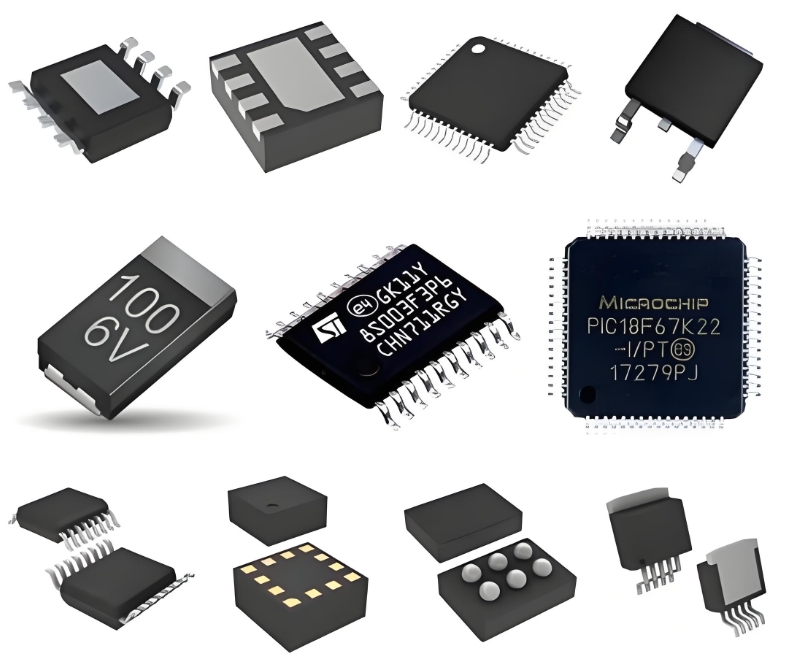**AD8622ARMZ-R7: A Comprehensive Technical Overview and Application Guide**
The **AD8622ARMZ-R7** from Analog Devices represents a pinnacle of precision analog design, integrating two high-performance, zero-drift operational amplifiers in a compact MSOP-8 package. This device is engineered for applications demanding exceptional accuracy, low noise, and minimal power consumption, making it a cornerstone component in modern electronic systems from medical instrumentation to industrial control.
**Core Technical Specifications and Architecture**
At its heart, the AD8622 leverages a **zero-drift core** architecture, which continuously self-corrects for DC errors such as offset voltage and drift over temperature and time. This technology is paramount for eliminating the need for periodic calibration in sensitive systems. The amplifier boasts an remarkably low input offset voltage of **5 μV (maximum)** and an near-zero drift of **0.005 μV/°C**. Furthermore, it exhibits minimal flicker noise (1/f noise), a common challenge in precision DC measurements, due to its auto-correction circuitry.
Other defining characteristics include:
* **Low Quiescent Current:** Typically 750 μA per amplifier, ideal for battery-powered and portable equipment.
* **Rail-to-Rail Input and Output:** Maximizes the dynamic range in low-supply-voltage applications, ensuring signals can swing close to both power supply rails.
* **Wide Supply Range:** Operates from a single supply of 2.7 V to 5.5 V or dual supplies of ±1.35 V to ±2.75 V.
* **High Gain and CMRR:** Open-loop gain of 130 dB and Common-Mode Rejection Ratio (CMRR) of 130 dB ensure precise signal amplification even in the presence of common-mode noise.
The **"R7"** suffix denotes a tape and reel packaging format suitable for high-volume, automated surface-mount assembly processes.
**Key Application Circuits and Design Considerations**

The combination of zero-drift, low noise, and low power consumption opens a vast array of applications.
1. **Precision Sensor Signal Conditioning:** The AD8622 is ideal for amplifying low-level signals from bridge sensors (e.g., strain gauges, pressure sensors) and thermocouples. Its zero-drift特性 eliminates errors that would otherwise swamp small sensor outputs. A standard instrumentation amplifier (in-amp) configuration, using two of the internal amplifiers for input buffering and gain, and the third (in a separate package) for difference amplification, is a common implementation.
2. **High-Resolution Data Acquisition Systems (DAQ):** In multi-channel DAQ systems, the amplifier serves as a premium buffer and driver for high-resolution Analog-to-Digital Converters (ADCs). Its rail-to-rail output allows for full utilization of the ADC's input range, while its low noise preserves system resolution.
3. **Active Filtering:** The low distortion and high gain make the AD8622 excellent for implementing active filters (e.g., Sallen-Key configurations) in signal paths where preserving signal integrity at low frequencies is critical.
4. **Medical and Analytical Instrumentation:** Applications like ECG amplification, blood glucose meters, and chemical sensors benefit from the amplifier's ability to accurately amplify microvolt-level biopotentials and transducer signals without adding significant DC error or noise.
**Designers must consider a few critical points for successful implementation:**
* **Decoupling:** Place 0.1 μF ceramic decoupling capacitors as close as possible to the supply pins to minimize noise and prevent potential instability.
* **Input Protection:** Although the IC has internal ESD protection, external diodes may be required if inputs can exceed the supply rails under fault conditions.
* **PCB Layout:** Employ a clean, star-ground layout to avoid coupling digital noise into the sensitive analog inputs. Guard rings around high-impedance input nodes can further reduce leakage current.
**ICGOODFIND**
The **AD8622ARMZ-R7** stands out as an exceptional choice for designers tackling the challenges of precision, low-frequency signal processing. Its **zero-drift technology** effectively solves the perennial problems of offset and 1/f noise, while its low-power, rail-to-rail operation aligns perfectly with the needs of modern portable and industrial equipment. When ultimate accuracy and stability are non-negotiable, this dual op-amp is a superior solution.
**Keywords:** Zero-Drift Operational Amplifier, Precision Signal Conditioning, Low Noise, Sensor Interface, Low Power Consumption
